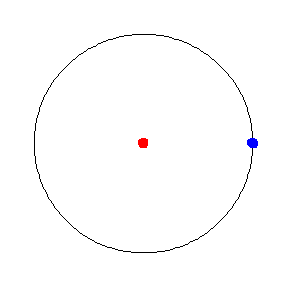In class
1. How much time does the second hand take to complete one circle?
Ans: 60 seconds or 1 minute.
2. What kind of motion do ants show?
Ans: Rectilinear motion
EXERCISE
I. Tick (√) the correct option to complete each sentence.
1. The SI unit of measuring mass is
Kelvin/ kilogram/ metre/ centimetre
Ans: kilogram
2. A leaf falling from a tree is an example of
random motion/ oscillator motion/ linear motion/ circular motion
Ans: random motion
3. When an object moves to-and-fro between any two points, it is in
rectilinear motion/ oscillatory motion/ rotational motion/ round motion
Ans: oscillatory motion
4. One metre has
10 cm/ 100 mm/ 1000 cm/ 100 cm
Ans: 100 cm
5. The unit that is used to measure the length of a cloth is
Metre/ millimetre/ micrometre/ decimetre
Ans: metre
6. If 'joule' is a unit named after a scientist, the correct way of writting the symbol of this unit is
J/ j/ jo/ JOL
Ans: J
II. Write in the blanks the kind of motion(s) the following events show.
1. Children playing on a metre-go-round
Ans: circular motion
2. A girl on a swing
Ans: oscillatory motion
3. Movement of clouds in the sky
Ans: rectilinear motion
4. Movement of the planet Venus around the Sun
Ans: periodic motion, circular motion
5. Motion of a stone falling from a tall building
Ans: rectilinear motion
6. Motion of a butterfly
Ans: random motion
III. Answer the following questions in one sentence.
1. What is the SI unit for measuring temperature?
Ans: kelvin is the SI unit for measuring temperature.
2. Name the SI unit used to measure the size of a room.
Ans: The SI unit used to measure the size of a room is metre.
3. Which unit is used to measure large distance?
Ans: To measure the large distance kilometre unit is used.
4. What is motion?
Ans: When an object changes its position with time then it is said to be in motion.
5. Give an example for circular motion.
Ans: The motion of blades of a fan is circular.
6. What is oscillatory motion?
Ans: When an object moves to and fro between any two points, that motion is called oscillatory motion.
IV. Answer the following questions in two sentences.
1. What are the advantages of using SI unit?
Ans: The use of SI units has made the process of measurement easy. It has also made the comparison of measurements convenient. The main advantage of using SI unit is that making things having the same dimensions world over is possible now.
2. Explain with an example how random motion differs from rectilinear motion.
Ans: Random motion is different from rectilinear motion. The motion a falling leaves is an example of random motion. The path of an object having random motion is zig-zag. On the other hand the path of an object possessing rectilinear motion is straight. The motion of car moving along a straight line is an example of rectilinear motion.
3. Explain what is a periodic motion.
Ans: A motion which keeps on repeating in a fixed period of time is called periodic motion. The Earth moves around the Sun in almost 365 days. So this is an example of periodic motion.
4. What is vibratory motion? Give an example.
Ans: When a string which is tightly held between two points is plucked then the string starts to vibrate. Such motion of the string is called vibratory motion.
Example: The string of musical instruments shows vibratory motion when plucked.
5. Describe the motion of the Earth around the Sun.
Ans: The Earth revolves around the Sun along its orbit. The Earth completes one round within a period of 1 year. So the motion is considered as periodic motion. Again the path of the Earth is circular around the sun, so the motion also can be considered as circular motion.
V. Answer in about for to five sentences.
1. Distinguish between circular and oscillatory motions with the help of simple diagrams.
Ans: Circular motion: If an object moves along a circular path then the motion is called circular motion. There is fixed point around which the object moves.
Oscillatory motion: If an object moves to and fro between ant two points, then the motion is called oscillatory motion. The movement of pendulum is oscillatory motion. One end of the pendulum remains at rest.
2. List any three rules that need to be followed while writing SI units.
Ans: Rule 1: The symbol of measuring unit is written in small letters, but if it is named after a scientist, it is written in capital letters.
Ex. Metre = m, Kilometre = km, Joule = J
Rule 2: when the full form is used, the symbol is written in small letters even if it happens to be named after a scientist.
Ex. metre, kilometre, joule
Rule 3: The symbol is never writen with a full stop unless it appears at the end of a sentence.
Ex. The road is 10 m wide.
The length of the pole is 1 m.





0 Comments